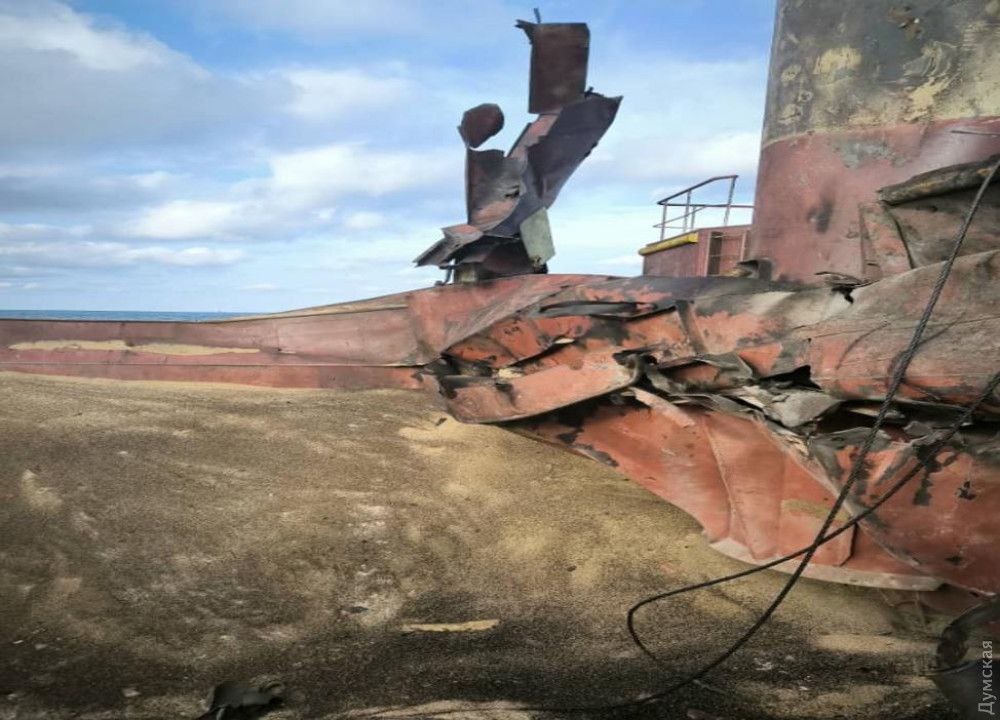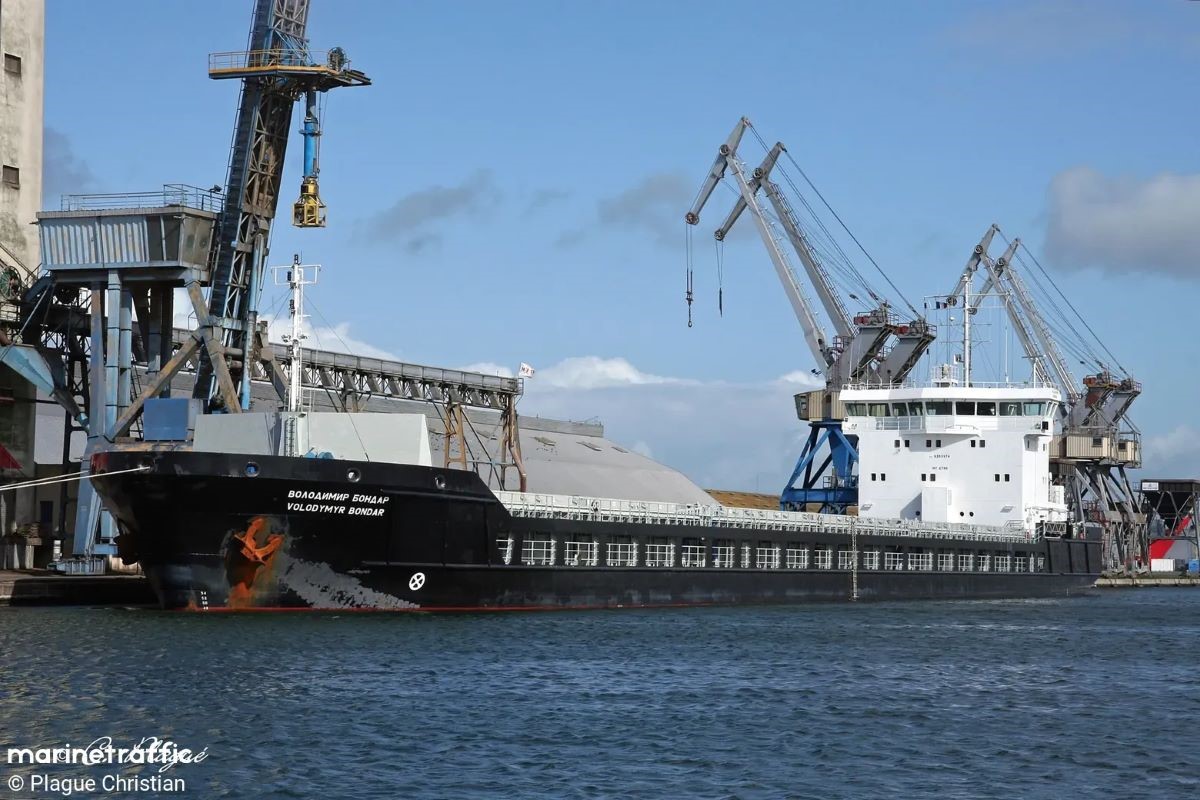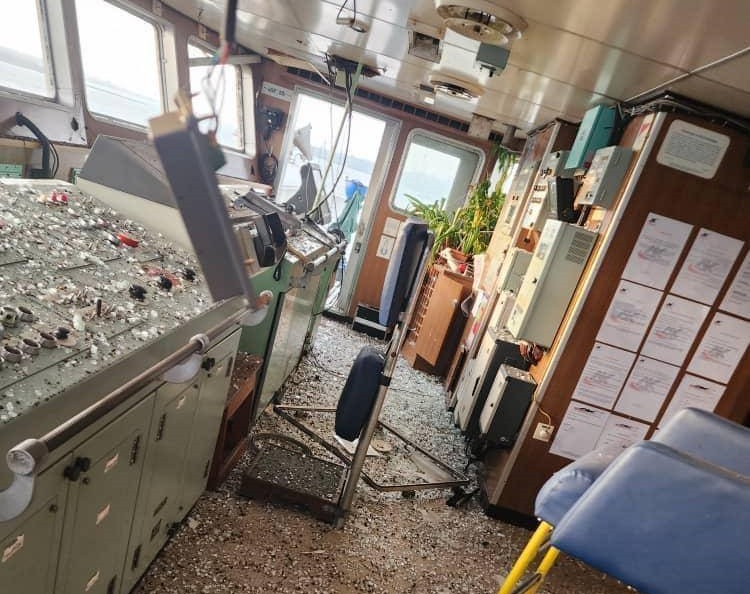Ukrainian grain corridor: why Russia started the hunting season for grain carriers in Odesa ports
The Monitoring Group of the BlackSeaNews and the Black Sea Institute of Strategic Studies
Russia has begun systematically shelling grain carriers that use the Ukrainian grain corridor. The attacks have become the continuation of the ongoing shelling of port infrastructure in Odesa region and have already caused damage to several vessels, as well as injuries and deaths. The collective response of the Black Sea countries is needed to deter the aggressor.
New targets: what has changed in Russian shelling of Odesa ports
As we all know, for the second year in a row, the Ukrainian grain corridor has been operating without the UN or Russia's participation. And for the second year in a row, Russia has been trying to incapacitate it.
Russia began its massive missile and drone terror of Ukrainian Black Sea ports in mid-July 2023, after it had withdrawn from the grain initiative.
And it should also be mentioned that literally on the second day after the start of the new Ukrainian grain corridor, August 2, 2023, the Russian Armed Forces launched a massive drone attack on the port and industrial infrastructure of the Izmail Commercial Sea Port. The elevator, grain hangars, tanks of one of the cargo terminals, production, warehouse and administrative premises were damaged or destroyed. The three-story building of the seaport and the building of PJSC Ukrainian Danube Shipping Company, a key Ukrainian cargo carrier on the Danube, also sustained significant destruction. Almost 40 thousand tons of grain expected by African countries, China, and Israel were damaged.
This year, Russia continues to destroy Odesa ports. Both last year and this year, we have noticed an increase in the number of Russian attacks on the port infrastructure of Odesa region in the months when the export of newly harvested grain begins along the Ukrainian grain corridor.
Compared to the same period last year, intensity of attacks in September-October of this year with, has been approximately the same. Yet there are some differences.
In September 2023, there were at least 14 attacks on the port infrastructure of Odesa region. The attacks involved mainly Shahed-136/131 strike UAVs, totaling over one hundred fifty drones, but at least two Iskander-M ballistic missile, one Oniks missile and12 Kalibr MLRSs attacks also took place. In the first two weeks of October 2023, there were 4 attacks on the Odesa region ports, in particular, in Izmail, Reni and Bilhorod-Dnistrovskyi districts. Of those, three were by strike UAVs and one by Iskander-M missile.
In 2024, Russian attacks on the port, energy, agricultural, and logistics infrastructure of Odesa region have been systematic since spring, with further intensification.

In September 2024, the Russian Armed Forces launched at least 15 attacks against the ports of Odesa region using attack UAVs and ballistic missiles from the occupied Crimea and cruise missiles from the Black Sea airspace. Since the beginning of October, there have already been about ten attacks on the port and other infrastructure of Odesa region involved in the operation of the Ukrainian grain corridor. This includes attacks on foreign civilian vessels calling at the ports of Greater Odesa.
The difference between the last and this year attacks is as follows:
– while intensive drone strikes continue, the use of Iskander-M ballistic missiles has increased significantly, including the use of Korean Iskander-M/KN-23 and X-59/69 cruise missiles;
– exclusive targeted attacks on Odesa region have become more frequent and not only as part of combined strikes on different regions of Ukraine;
– attacks on civilian vessels have begun, making it the most crucial difference.
Statistics confirm the deterioration of the security situation in the Black Sea. While last year in September-October there were no attacks on civilian vessels, since the beginning of this fall, 6 civilian vessels have been hit already.
From the beginning of this year and at least until mid-September, it could be argued that the attacks on civilian vessels were accidental and unintentional. Over January-August, only one vessel - a Cameroon-flagged ship - was damaged by rocket fragments in the Odesa region on 10.07.24.
However, since mid-September, the number of hits on ships began to systematically increase.

In September, there were two hits: on 11.09.24 - a missile (probably KAR X-22) hit the grain carrier AYA (IMO 9117868, flag of St. Kitts and Nevis), that was transporting wheat from one of the ports of Greater Odesa to Egypt. The missile hit the bulk carrier on the Năvodari traverse; on 20.09.24 - an Iskander-M missile attacked port and civilian infrastructure in the port of Odesa, as well as the civilian ship GOLDEN LION flying the flag of Antigua (pictured above).
At the end of September, and especially in the first half of October, Russians began targeting civilian vessels in and near the ports of Odesa region with missiles and drones.
The week between October 6 and 15 was the hottest, with 4 attacks and 4 civilian vessels hit, one of them twice. Among the hit and damaged vessels were 3 grain bulk carriers and one carrying rolled metal products:
06.10.2024 - PARESA (IMO 9008134. Flag St.Kitts and Nevis);
07.10.2024 and 14.10.2024 - OPTIMA (9528691. Flag Palau);
09.10.2024 - SHUI SPIRIT (IMO 9216729. Flag Panama);
14.10.2024 - NS MOON (IMO 8919855. Flag Belize).
Thus, from early September to mid-October, there were 6 attacks on civilian vessels - 2 in September and 4 in October, damaging six vessels, one of them - twice. The attacks have resulted in deaths and injuries. For example, on October 9, three port employees were killed and seven others injured, while after in the October 14 attack - one person killed and eight injured.

That is, civilian vessels using the Ukrainian grain corridor have become desirable targets for the Russian occupiers. And we predict further escalation of targeted attacks, primarily on bulk carriers.
Overall, so far, this year, there have been 7 attacks on civilian vessels damaging 7 vessels.
Bulk carriers in the crosshairs: why is Russia trying to intimidate shipowners?
Andrii Klymenko, Head of the Monitoring Group of the BlackSeaNews and the Black Sea Institute of Strategic Studies, calls Russian shelling of civilian vessels “the first element of Russia's new naval tactics/strategy in the Black Sea” and also notes the selectivity of the shelling depending on the vessel's flag:
“Ballistic missile attacks on the ports of Greater Odesa with damage to ships is not a temporary phenomenon, it is a new strategy aimed at physically preventing the functioning of the Ukrainian sea corridor.”
By shelling the ports of Greater Odesa and civilian vessels traveling through the Ukrainian grain corridor, Russia is pursuing several goals. Overall, by intimidating shipowners and making its usage unprofitable, as well as destabilizing the ports, it aims to destroy the Ukrainian grain corridor. Another goal of Russia's shelling is to improve its own grain exports position through the Black Sea ports.
In particular, by shelling, Russia is trying to force ship owners and captains to change course and head to the Russian ports of Novorossiysk and Taman instead of the Ukrainian Odesa region ports.
Also, instability in the Black Sea is already starting to affect the price of wheat on world markets. Currently, the sale of grain is one of the foreign currency sources of the Russian budget for continuing the bloody war. Therefore, Russia is interested in selling more of it and at a higher price.
In addition, Russia wants to become the maximally possible monopolistic supplier of food to African countries. And the route through the Black Sea ports is the shortest way for grain to get from Russia's fields to African countries.
It should be noted that in the future, Russia plans to increase grain exports through the Black Sea ports and is already building the appropriate infrastructure on its Black Sea coast, both port and railroad. In particular, at the end of last year, the Grain Terminal Complex in the port of Taman - ZTKTKT, 50% owned by Demeter Holding - launched a two-phase project to increase its grain export capacity. The modernization of berths and dredging should increase the number of vessels loaded at the terminal by 60% - from 125 to 200 per year. The second stage involves the construction of a railway infrastructure to the marine terminals for transshipment of agricultural products on the Taman Peninsula - currently, only road transportation is available there. These innovations, according to the Russians, should increase the annual transshipment of grain at the Taman terminal from the current 5.5 to 8 million tons per year.
Although the results of those projects are expected closer to 2027, it is already clear that Russia will do everything to remove its main competitor in the Black Sea grain exports - Ukraine.

However, in the first nine months of this year, monitoring shows that the increase in shelling of the ports of Greater Odesa has not affected the number of ship calls. The Russians' expectation that ship crews would refuse to call at potentially dangerous ports has not materialized. Thus, in the summer, the monthly number of ship calls was about 230, despite the increase or decrease in shelling. In September, we have recorded 214 ship calls, which is slightly less than the average for the last six months. But it is too early to say for sure whether this reduction is the result of attacks on civilian vessels.
It is difficult to predict whether the situation with ship calls will change since Russia opened a “hunting season” for bulk carriers in October. For now, we can assume that there would be no radical drop in the number of ship calls, and that only isolated cases of refusals are likely.
At the same time, in addition to Russian missile and drone attacks, there is also the danger of occupants mining the Black Sea, which should be taken into account.
Countering port shelling -- the response must be collective
It should be understood that Russian shelling of Odesa region ports poses a threat not only to Ukraine. Russia continues to attack Ukrainian Black Sea ports with a variety of weapons, so there is a danger to the border regions of Romania and Bulgaria. This year alone, there have been at least three cases of Russian attack drones flying into Romania during the attacks. The danger to citizens and businesses of all those countries that use the Ukrainian grain corridor remains. So, it is not only Ukraine that must counter these attacks and other risks. There must be a collective response. Some steps are already being taken in that direction, but both their number and speed are clearly insufficient.
In particular, we believe that it is worth strengthening the composition of the MSM Black Sea Mine Countermeasures Group with the participation of Romania, Bulgaria, and Turkey and expanding its area of operation to Ukrainian territorial waters in the northern part of the Black Sea. It would also be advisable to strengthen Romania's air defense forces and other military capabilities in order to deter Russian aggression in the Black Sea. In addition, NATO should consider not only increasing airspace monitoring - as it has done since September 29, when NATO launched additional flights of surveillance aircraft equipped with an airborne warning and control system (AWACS) over Romania - but also the possibility of shooting down UAVs or missiles in the airspace of the Black Sea countries.
For its part, Ukraine has managed to neutralize the Russian naval threat to Odesa region's ports, partially destroying it and pushing its remnants into Russian territorial waters in the eastern Black Sea. Now it is necessary to neutralize the danger from Russian ballistic missile attacks launched from the territory of occupied Crimea; cruise missile attacks from the skies over the Black Sea, and Russian carpet minings in the western Black Sea.
* * *
 This article has been prepared with the support of the European Union in Ukraine. The content of the article is the sole responsibility of the authors and does not necessarily reflect the position of the EU
This article has been prepared with the support of the European Union in Ukraine. The content of the article is the sole responsibility of the authors and does not necessarily reflect the position of the EU